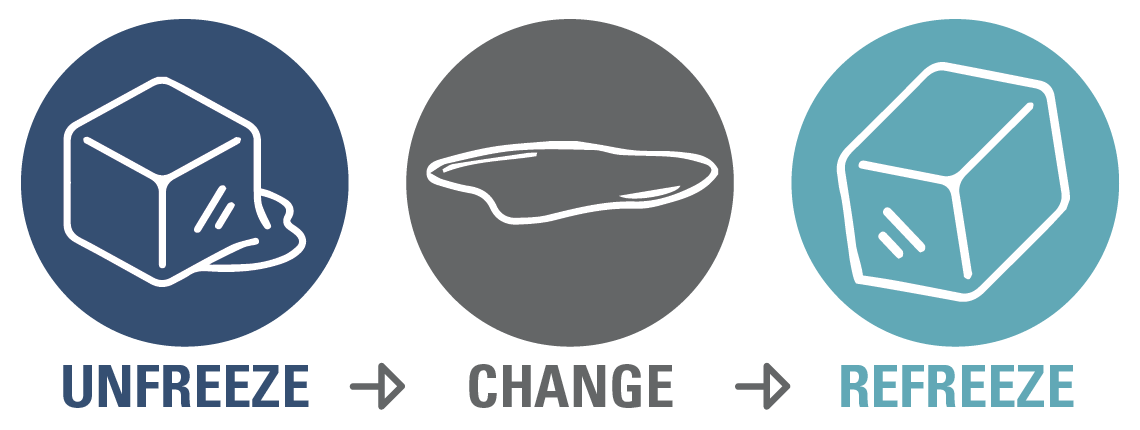Kotter’s Model of Change
Kotter’s Model of Change
Organizations require both stability and change. Stability permits day-to-day management and predictable outcomes, while the flexibility to change enables an organization to adapt to constantly evolving circumstances. But, change requires agility, and most organizations with traditional management structures aren’t agile. Agility is important, however, because it enables organizations to make the most of the opportunities available to them while also dodging threats. John Kotter, a prominent expert on leadership and change, offers a research-based solution to this dilemma. His theory of change shows how organizations support change through a different structure than the one they use to promote continuity.
Kotter is an emeritus professor at Harvard Business School and a cofounder of Kotter International. He began his career researching leadership and organizational change and, based on this work, developed a model to guide organizations through the change process. His eight-step model first appeared with the publication of Leading Change in 1996 and over the next 20 years was developed and expanded, especially in the 2012 Harvard Business Review article “Accelerate!” and the 2014 book of the same title.
According to Kotter, change requires an accelerating process through which a guiding coalition of change agents identifies a clear focus for change and sponsors the change among a widening group of colleagues. To mobilize the effort, the guiding coalition looks for what Kotter calls “a big opportunity.” This opportunity becomes the central challenge that an expanding organizational network seeks to address. The box below lists the eight steps in Kotter’s most recent version of the model.
- Create a sense of urgency around a big opportunity.
- Build and evolve a guiding coalition.
- Form a strategic vision and initiatives.
- Enlist a volunteer army.
- Enable action by removing barriers.
- Generate (and celebrate) short-term wins.
- Sustain acceleration.
- Institute change. (Kotter, 2014, pp. 27-34)
Lewin’s Three-stage Change Model
Kurt Lewin was an influential social psychologist during the first half of the 20th century. His work pioneered many new concepts, especially those related to group dynamics and action research. In his study of groups, Lewin (1947a, 1947b) noted that human interactions are balanced and constrained by social conventions or forces. This balance amounts to the social status quo. Changing the status quo means acting in opposition to the forces that maintain it, a difficult proposition. Thus Lewin set about studying how these social forces can be changed successfully. His model, which became a classic of the field, has since been applied to organizational change—organizations are, after all, groups of people.
According to Lewin, changes often produce short-term effects but are unable alter the status quo for the long term. Lewin’s observations offer insight into how we might produce lasting change and actually shift to a new status quo. Lewin observed that permanent changes occur according to a process of “unfreezing, moving, and freezing” (1947a, p. 34). After Lewin’s death, his observations of change in groups became the foundation for the “changing as three steps” model (Cummings, Bridgman, & Brown, 2016). In this model, Lewin’s steps are often reconfigured as “unfreeze, change, and refreeze.”
The model frequently uses the metaphor of an ice cube. For example, if you want to change a cube-shaped block of ice into a cone-shaped block of ice, you must first unfreeze it to make it malleable. In order to make an organization more malleable, however, you must challenge the status quo—the organization’s underlying structures and assumptions. Successfully challenging the status quo demonstrates why it needs to change. Having convinced people of the need for change, the next step is to enact policies or interventions that take a new direction. These changes move the organization forward, allowing it to respond effectively to evident challenges. For a block of ice, this would be the work of melting it and placing it into a cone-shaped mold. As applied to organizational change, the model recognizes that change is disruptive and that time and communication are key factors for success. Finally, at the last step—refreezing—those supporting the change need to make sure it becomes institutionalized (i.e., well-entrenched and long-term). For a block of ice, refreezing is a process of solidifying. For an organization, refreezing involves internalizing the changes within the organizational structure. See the diagram below for a graphic that shows the three steps in Lewin’s model of change.
Lewin's Model
